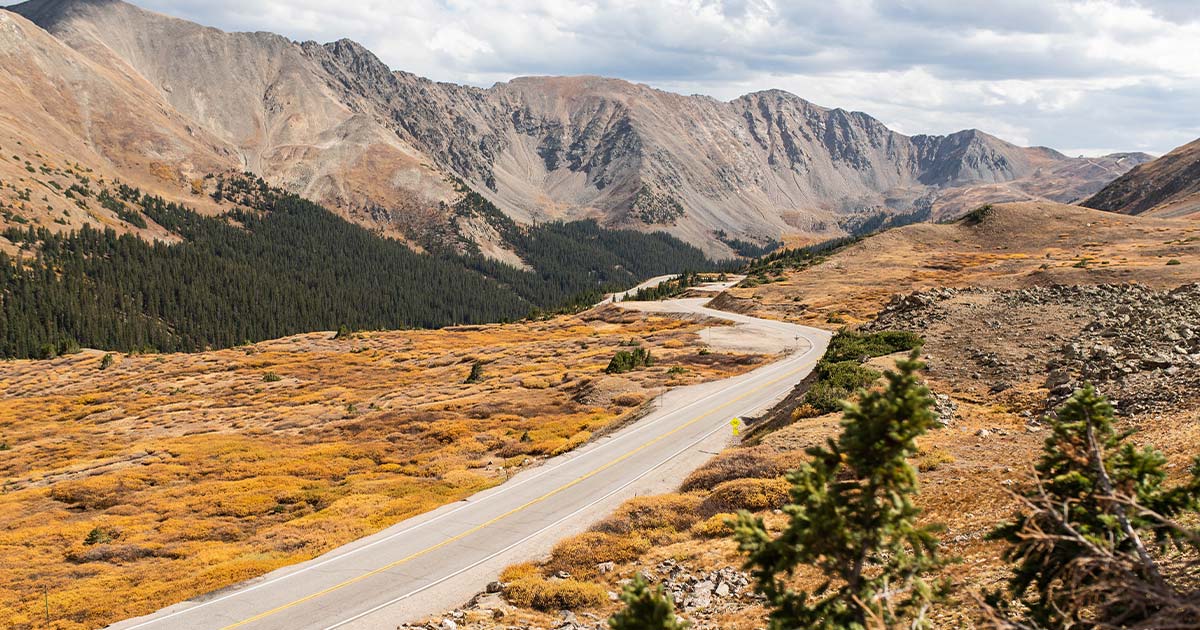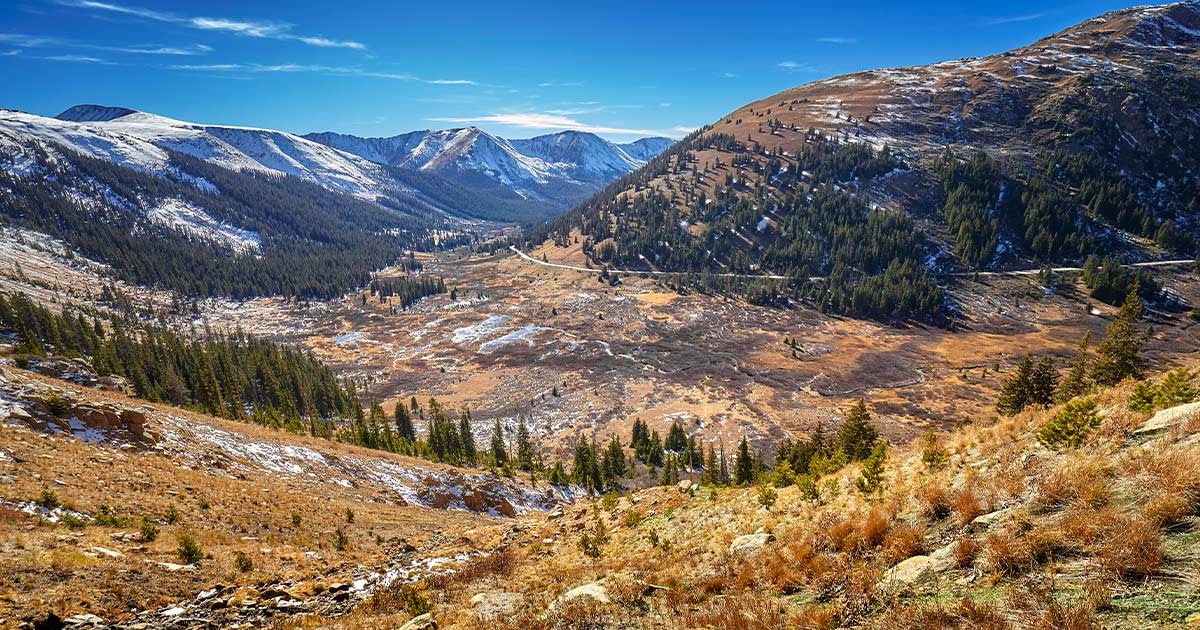
Hiking the Continental Divide Trail (CDT) is an adventure like nothing you’ve probably ever experienced. The CDT stretches over 3,100 miles through some of the most spectacular wilderness from the Mexican border to the Canadian border, along the backbone of North America, the Continental Divide. The trail is a test of endurance, a journey of self-discovery, and an opportunity to connect with nature in its purest form.
The Continental Divide Trail is one of America’s longest and most challenging hiking trails, winding through numerous diverse terrains, including deserts, mountains, forests, and grasslands. It takes hikers through five states: New Mexico, Colorado, Wyoming, Idaho, and Montana, and it can take around six months to complete. While the time commitment is massive, the reward is a life-changing experience where hikers experience some of the most breathtaking scenery in the world.

The idea of a trail following the Continental Divide dates back to the early 1900s when the first attempts were made to mark the route. However, it wasn’t until the 1970s that the concept of a long-distance hiking trail gained traction. The idea was to connect the existing long-distance trails, such as the Appalachian Trail and the Pacific Crest Trail with a route that followed the Rocky Mountains’ Continental Divide. In 1973, Congress passed the National Trails System Act, which included the Continental Divide Trail as one of the country’s national trails.
The CDT offers a unique hiking experience because it is still a work in progress. Currently, only around 70 percent of the trail is complete, while the rest follows roads or designated routes. Efforts are ongoing to connect the remaining sections of the trail, and the route is constantly evolving.
The trail runs along the continental divide, the imaginary line separating water that flows west to the Pacific Ocean from water that flows east to the Gulf of Mexico and the Atlantic Ocean.
Why Hike The Continental Divide Trail?

Hiking the CDT offers an unparalleled opportunity to connect with nature and push your physical and mental limits. The trail takes you through some of North America’s most remote and pristine wilderness areas, where few have ventured before. If you are looking for a trail that is off the beaten path, one that very few people ever complete, this is the trail! From the soaring peaks of the Rocky Mountains to the arid deserts of New Mexico, the trail offers a diverse array of awe-inspiring landscapes.
Like most of the major national trails, the CDT is also an opportunity to live a simpler life, free from distractions and the pressures of modern society. Hiking for months and relying solely on what you can carry on your back is a humbling experience promoting self-reliance, resilience, and mindfulness. The trail offers a chance to disconnect from the digital world and reconnect with your inner self and the natural world.
Challenges of Hiking The Continental Divide Trail

Hiking the CDT is not for the faint of heart. It is a challenging and physically demanding trail that requires extensive preparation and training. Hikers on the CDT face numerous obstacles, including:
Weather: The CDT spans a variety of climates and elevations, which means hikers can experience extreme weather conditions. Hikers can encounter snow, hail, thunderstorms, high winds, heatwaves, and drought.
Navigation: The CDT is still a work in progress, which means that some sections of the trail are not well marked, and hikers may need to rely on maps and compasses to navigate.
Water: Water sources on the CDT can be scarce, especially in arid regions, so hikers must plan water stops carefully.
Resupply: The CDT passes through some remote areas, which makes resupplying food and other essentials challenging.
Wildlife: Hikers on the CDT may encounter wildlife such as bears, mountain lions, and moose, which can be dangerous if not cautiously approached.
Preparing for Hiking The Continental Divide Trail

Proper preparation is critical to a successful CDT hike. Hikers need to prepare physically, mentally, and logistically to tackle the challenges of the trail.
Physical preparation
Hiking the CDT is physically demanding, so hikers need to be in excellent physical condition before setting out on the trail. Ideally, hikers should start training several months before their hike, focusing on cardiovascular endurance, strength, and flexibility.
Mental preparation
Hiking the CDT is mentally challenging as well. Hikers need to be mentally prepared to deal with the physical challenges, as well as the isolation and potential dangers they may encounter on the trail. Meditation, mindfulness, and visualization techniques can help hikers mentally prepare for the trail.
Logistical preparation
Hikers on the CDT must plan their logistics carefully, including resupplying food and water, staying safe in remote areas, and dealing with emergencies. Hikers should also thoroughly research the trail and be familiar with the route before heading on the journey.
Plan and prepare for the journey: Before embarking on the CDT, it’s crucial to do your research, map out your route, and plan your resupply strategy. Take the time to study the terrain, weather patterns, and potential hazards like wildlife, river crossings, and extreme weather. Make sure you have the appropriate gear, including a durable backpack, lightweight tent, sleeping bag and pad, adequate clothing layers, sturdy hiking boots, and plenty of food and water.
Connect with the community: The CDT is a physical challenge and a social and cultural experience. Meet fellow hikers, trail angels, and locals along the way, and share stories, tips, and support. Join hiking groups, attend trail events, and use social media and other resources to stay connected and informed.
Pace yourself: The CDT is a long-distance hike that takes several months to complete. It’s important to avoid burnout and injury by pacing yourself and listening to your body. Start slow and gradually increase your daily mileage, taking rest days when needed. Take time to appreciate the scenery, the wildlife, and make sure you get enough rest.
Be flexible and adaptable: The CDT is a dynamic and challenging trail that requires flexibility and adaptability. Be prepared to adjust your plans due to unexpected weather, trail closures, or other challenges. Have backup plans for resupply, side trials, and emergencies.
Respect the environment and wildlife: The CDT passes through some of the most diverse and fragile landscapes in the world, including national parks, forests, deserts, and mountains. Leave no trace, respect local regulations, and minimize your environmental impact. Keep a safe distance from wildlife and practice proper food storage to avoid confrontations.
Stay safe and prepared: The CDT can present unpredictable challenges like sudden storms, flash floods, and medical emergencies. Carry a first aid kit, whistles, headlamps, and other essential safety gear. Stay informed of weather and trail conditions, and avoid taking unnecessary risks.
Embrace the journey: Finally, remember that the CDT is not just about reaching the endpoint but about embracing the journey. Savor every moment, challenge yourself, and immerse yourself in the beauty and wonder of the trail. Keep a positive attitude, be open to new experiences, and enjoy the adventure of a lifetime.
Hiking the Continental Divide Trail is a once-in-a-lifetime experience that can transform you physically, mentally, and spiritually. By following these tips and preparing well, you can make the most of this unforgettable journey and create memories that will last a lifetime.
Hiking Resources:
CDT Hiking Resources
- Official Trail Website: http://www.continentaldividetrail.org/
- The Continental Divide Trail: Exploring America’s Ridgeline Trail


